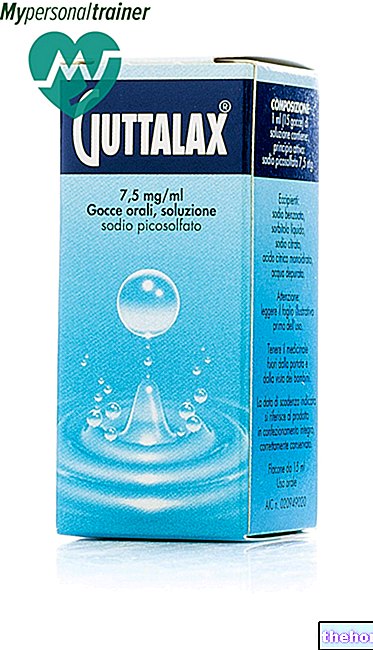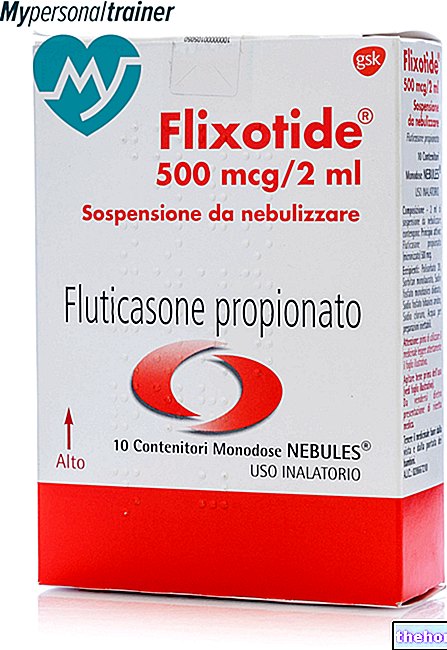Active ingredients: fosfomycin trometamol
MONURIL adults 3 g granules for oral solution MONURIL children 2 g granules for oral solution
Indications Why is Monuril used? What is it for?
Fosfomycin belongs to a group of medicines called urinary antimicrobial agents.
MONURIL is indicated in the prevention and treatment of uncomplicated acute infections of the lower urinary tract caused by germs sensitive to fosfomycin.
Contraindications When Monuril should not be used
Do not take MONURIL
- if you are allergic to fosfomycin or any of the other ingredients of this medicine;
- if you have severe kidney problems;
- if you have difficulty urinating;
- if you are undergoing hemodialysis.
Children under the age of 12 should not take the 3 g sachets
Children under 6 years of age should not take the 2 g sachets.
Precautions for use What you need to know before taking Monuril
Talk to your doctor before taking MONURIL and if you have any of the following conditions:
- if you have shown symptoms of allergic reactions to fosfomycin in the past;
- if you think you are pregnant or breastfeeding
Should the following conditions occur, follow the instructions provided:
- if you have allergic reactions, including anaphylaxis and anaphylactic shock, do not continue treatment with Monuril and seek medical attention immediately as these reactions can be life-threatening;
- if you have diarrhea, particularly if severe, persistent and / or bloody, even several weeks after treatment with Monuril, talk to your doctor. Do not take medicines that inhibit bowel motility (antiperistaltics)
Interactions Which drugs or foods can change the effect of Monuril
Tell your doctor or pharmacist if you are taking, have recently taken or might take any other medicines.
Concomitant administration of metoclopramide (a medicine that prevents vomiting) reduces the oral absorption of fosfomycin. Other drugs that increase gastrointestinal motility can produce similar effects.
Concomitant administration of antacids or calcium salts may cause a decrease in plasma and urinary concentrations of fosfomycin.
Numerous cases of increased activity of vitamin K antagonists have been reported in patients treated with antibiotics.
If you need to have blood tests to check the clotting time (INR) tell your doctor as taking Monuril may in some cases alter the results.
MONURIL with food and drink
Food may delay the absorption of MONURIL resulting in a slight reduction in plasma peaks and urinary concentrations. Therefore, it is recommended that MONURIL be administered on an empty stomach or approximately 2-3 hours after meals.
Warnings It is important to know that:
Pregnancy, breastfeeding and fertility
Ask your doctor or pharmacist for advice before taking any medicine.If you are pregnant or breast-feeding, think you may be pregnant or are planning to have a baby, ask your doctor or pharmacist for advice before taking this medicine.
Pregnancy
MONURIL should be administered to pregnant women only in case of a real therapeutic need and only under medical supervision.
Feeding time
MONURIL can be used during breastfeeding only after taking a single oral dose. However, during lactation the medicine should be administered only in case of real need and under the direct supervision of the doctor.
Driving and using machines
Cases of vertigo have been reported. This may affect the ability to drive and use machines in some patients.
Important information about some of the ingredients: MONURIL contains sucrose.
If you have been told by your doctor that you have an intolerance to some sugars, contact your doctor before taking this medicinal product.
Use with caution in patients with diabetes or who follow a calorie restricted diet.
Monuril Adult 3 g contains 10.3 mmol (238 mg) sodium per dose. To be taken into consideration in people with reduced kidney function or who follow a low sodium diet.
Monuril contains saccharin.
Dosage and method of use How to use Monuril: Dosage
Always take this medicine exactly as your doctor has told you. If in doubt, consult your doctor or pharmacist.
Your doctor will prescribe the duration of the treatment. Do not stop treatment sooner than you have said, as the expected results may not be obtained in this case.
The content of one sachet is dissolved in half a glass (50-75 ml) of cold water or other beverage, stirring until completely dissolved and must be taken immediately after preparation.
It is recommended that MONURIL be administered on an empty stomach (see "MONURIL with food and drink"), preferably before a night's rest after emptying the bladder.
Dosage
Adults and adolescents (12-18 years):
In acute uncomplicated infections of the lower urinary tract sustained by germs susceptible to fosfomycin, the dosage is one 3 g sachet in a single daily administration.
In the prevention of urinary tract infections in surgical interventions and in trans urethral diagnostic maneuvers, the treatment involves the administration of two doses of 3 g: the first sachet is administered 3 hours before the operation, the second sachet is administered 24 hours after the procedure. first dose.
Clinical symptoms generally disappear after 2-3 days.
The persistence of some local symptoms after treatment is not necessarily an expression of therapeutic failure, but a more probable consequence of previous inflammatory processes.
Elderly and other relevant clinical situations:
In elderly patients and in the most clinically demanding cases (bedridden patients, recurrent infections) two doses of 3 g administered 24 hours apart may be required.
Children over 6 years of age:
One sachet of 2 g in a single daily administration.
Overdose What to do if you have taken too much Monuril
If you take more MONURIL than prescribed
If you accidentally take doses of MONURIL higher than those prescribed, contact your doctor or pharmacist immediately.
In case of overdose it is necessary to favor the urinary elimination of the active principle by means of adequate administration of liquids.
Symptoms
If you have taken too much Monuril you may experience the following symptoms: loss of balance, hearing problems, metallic taste and general decline in taste perception.
If you forget to take MONURIL
If you forget to take a dose of the medicine, do not take a double dose to make up for a forgotten dose.
If you forget to take a dose of your medicine, take it as soon as you remember; however, if the time for your next dose is near, skip the missed dose and take the next dose at the prescribed time.
If you have any further questions on the use of this medicine, ask your doctor or pharmacist.
Side Effects What are the side effects of Monuril
Like all medicines, this medicine can cause side effects, although not everybody gets them.
Contact your doctor as soon as possible if any of the following side effects occur
Common (affects 1 to 10 users in 100):
- diarrhea, dyspepsia (feeling of fullness with gastric acidity), nausea;
- headache, dizziness;
- vulvovaginitis (inflammation of the vulva and vagina)
Uncommon (affects 1 to 10 users in 1000):
- vomiting and abdominal pain;
- paraesthesia (tingling);
- rash, hives (itchy reddish blisters) and itching;
- fatigue.
Rare (affects 1 to 10 users in 10,000):
- superinfections with resistant bacteria;
- tachycardia (rapid heartbeat);
- aplastic anemia (reduction in the number of red blood cells).
Other undesirable effects have been observed, but their frequency cannot be established from the available data; these include:
- vision disturbances;
- lack of appetite;
- phlebitis (formation of blood clots in the veins);
- hypotension (low blood pressure);
- wheezing (breathing problems);
- bronchospasm (severe difficulty in breathing);
- asthma;
- liver problems with a transient increase in liver enzymes (transaminases);
- slight increase in eosinophilic white blood cell count and platelet counts (blood cells), slight petechial reaction (small red spots on the skin);
- angioedema (swelling)
- allergic reactions, including anaphylaxis and anaphylactic shock. In these cases, do not continue treatment with Monuril and seek medical attention immediately as these reactions can be life-threatening.
Reporting of side effects
If you get any side effects, talk to your doctor or pharmacist. This includes any possible side effects not listed in this leaflet.
You can also report side effects directly via the national reporting system at “www.agenziafarmaco.gov.it/it/responsabili.” By reporting side effects you can help provide more information on the safety of this medicine.
Expiry and Retention
Keep this medicine out of the sight and reach of children.
Do not use this medicine after the expiry date which is stated on the carton and sachet. The expiry date refers to the last day of that month.
Storage conditions: Store in the original packaging.
Do not throw any medicines via wastewater or household waste. Ask your pharmacist how to throw away medicines you no longer use. This will help protect the environment.
Source Package Leaflet: AIFA (Italian Medicines Agency). Content published in January 2016. The information present may not be up-to-date.
To have access to the most up-to-date version, it is advisable to access the AIFA (Italian Medicines Agency) website. Disclaimer and useful information.
01.0 NAME OF THE MEDICINAL PRODUCT
MONURIL GRANULATE FOR ORAL SOLUTION
02.0 QUALITATIVE AND QUANTITATIVE COMPOSITION
MONURIL Children 2g
one envelope contains:
Active principle: fosfomycin trometamol g 3.754 (equal to fosfomycin g 2.0)
Excipients: sucrose
MONURIL Adults 3 g
one envelope contains:
Active principle: fosfomycin trometamol g 5.631 (equal to fosfomycin g 3.0)
Excipients: sucrose
For the complete list of excipients, see paragraph 6.1
03.0 PHARMACEUTICAL FORM
Granules for oral solution.
04.0 CLINICAL INFORMATION
04.1 Therapeutic indications
• Acute bacterial cystitis, acute episodes of relapsing bacterial cystitis, acute bacterial urethro-bladder syndrome, non-specific bacterial urethritis.
• Significant asymptomatic bacteriuria (pregnancy).
• Post-operative urinary infections.
• Prophylaxis of urinary tract infections in surgical interventions and transurethral diagnostic maneuvers.
04.2 Posology and method of administration
Adults
A 3 g sachet (as active ingredient) once, preferably in the evening before bedtime, after emptying the bladder.
In the most demanding cases (elderly, patients in bed, recurrent infections) administer a second sachet 24 hours apart.
Children
One sachet of 2 g (as active ingredient) once (MONURIL Children).
Clinical symptoms generally disappear after 2-3 days.
In acute infections of the lower urinary tract (cystitis, non-gonococcal urethritis) sustained by germs sensitive to MONURIL, a single dose of product (2 g of active ingredient in the child) is sufficient to determine the healing of the episode.
The persistence of some local symptoms after treatment is not necessarily an expression of therapeutic failure, as it is mostly attributable to previous inflammation.
In the most clinically demanding cases (elderly subjects, patients in bed, recurrent infections) or in infections sustained by germs sensitive mainly to the highest concentrations of antibiotic (Pseudomonas, Enterobacter, Proteus indole +), two doses of MONURIL may be required to be administered at a distance of 24 hours from each other.
In the prophylaxis of urinary infections following surgery and transurethral diagnostic maneuvers, the treatment is usually carried out using two doses of MONURIL. The first dose should be administered about 3 hours before the operation, the second should be taken 24 hours after the first.
MONURIL should only be administered orally, on an empty stomach; preferably before the night's rest, after emptying the bladder.
The dose must be dissolved in a glass of water (50-75 ml) or other beverage acceptable to the patient and administered immediately after its preparation.
04.3 Contraindications
Known hypersensitivity to the product.
Severe renal insufficiency (creatinine clearance
Patients undergoing hemodialysis.
04.4 Special warnings and appropriate precautions for use
MONURIL has been used in a large number of cases (children, adults, elderly subjects and pregnant women) consisting of patients with lower urinary tract infections in which short-term antibacterial treatment (one or two administrations) at high doses is advantageous.
Persistent sterilization of the urine, associated with the disappearance of the main clinical symptoms, was observed in more than 90% of cases treated as early as the 2nd - 3rd day from the start of treatment.
The in vivo antibacterial activity of MONURIL is not affected by large variations in urinary pH.
Due to its peculiar characteristics, MONURIL is particularly suitable for the treatment (prophylaxis-therapy) of short duration (one or two doses) of "uncomplicated" acute infections of the lower urinary tract.
This therapeutic approach has been shown to provide the following benefits:
• it is simple and as effective as prolonged therapy
• well tolerated
• does not present the risk of premature interruption of therapy by the patient at the time of the disappearance of clinical symptoms: frequent risk in clinical practice during the application of prolonged treatment regimens in uncomplicated urinary infections
• due to the high levels reached during infection, it ensures a "bactericidal action on most uropathogenic germs, reducing the risk of selection of resistant bacterial strains
• reduces the risks to the fetus in case of pregnancy.
Cases of antibiotic-induced colitis (including pseudomembranous colitis) have been reported following the use of broad spectrum antibiotics including fosfomycin trometamol; it is important to consider this diagnosis for patients who have experienced significant diarrhea during or after taking of fosfomycin trometamol.
In this situation, an "adequate therapy that excludes the use of peristalsis inhibitor drugs must be initiated promptly."
The meal can delay the absorption of the active ingredient of MONURIL, resulting in a slight decrease in blood peaks and urinary concentrations. It is therefore preferable that the product is taken on an empty stomach, about 2-3 hours away from meals.
In patients with moderate renal impairment, including physiological reduction in the elderly, the half-life of fosfomycin may be longer.
There are no known side effects of such importance as to suggest other particular precautions related to the intake of the product.
The product contains sucrose: patients with rare hereditary fructose intolerance, glucose-galactose malabsorption, sucrase-isomaltase insufficiency should not take this medicine; use with caution in patients with diabetes or who follow a calorie restricted diet.
Monuril 3 g contains 238 mg (10.3 mmol) of sodium per dose; keep this information in mind in the case of patients on a controlled sodium diet.
Monuril 3 g granules for oral solution
Pediatric population
Monuril 3 g is not indicated for the pediatric population for which the use of Monuril children 2 g is recommended.
04.5 Interactions with other medicinal products and other forms of interaction
Fosfomycin / metoclopramide: in the case of simultaneous intake of fosfomycin and metoclopramide, the latter reduces the concentration of fosfomycin in both plasma and urine. Other drugs that increase gastrointestinal motility can produce similar effects.
Phosphomycin / antacids or calcium salts: concomitant administration of antacids or calcium salts induces a reduction of fosfomycin in terms of plasma levels and urinary concentrations. Phosfomycin / food: if administered with meals, fosfomycin may be decreased in plasma and urine.
Pediatric population
Interaction studies have only been conducted in adult patients.
04.6 Pregnancy and lactation
Pregnancy
A moderate amount of data in pregnant women (300 to 1000 exposed pregnancies) indicates that fosfomycin trometamol does not cause malformations or fetal / neonatal toxicity.
Animal studies do not show reproductive toxicity (see section 5.3).
However, Monuril during pregnancy should only be used in cases of real need and under the direct supervision of a doctor.
Feeding time
It is unknown whether fosfomycin trometamol / metabolites are excreted in human milk. A risk to the newborns / infants cannot be excluded.
04.7 Effects on ability to drive and use machines
There are no assumptions or evidence that the drug can modify attention and reaction times.
04.8 Undesirable effects
The most common side effects that occur following a single dose of fosfomycin trometamol involve the gastrointestinal tract; diarrhea appears to be the most frequently occurring adverse event. These side effects are usually of limited duration and resolve spontaneously.
The following table shows the undesirable effects that have been reported following administration of Monuril in clinical trials or post-marketing experience.
The frequency categories shown in the table are as follows: very common (≥ 1/10); common (≥ 1/100,
Within each frequency group, undesirable effects are presented in descending order of severity.
04.9 Overdose
The following events have been observed in patients who have taken Monuril in excessive doses: vestibular symptoms, hearing problems, metallic taste and general decline in taste perception.
In the event of an overdose, therapy based on symptomatic and supportive treatment should be followed. The patient must drink a sufficient quantity of water (ask your doctor for advice) in order to facilitate the elimination of the drug with urine.
05.0 PHARMACOLOGICAL PROPERTIES
05.1 Pharmacodynamic properties
MONURIL [mono (2-ammonium-2-hydroxymethyl-1,3-propanediol) (2R-cis) - (methyloxyranyl) phosphonate] is a broad spectrum antibacterial active in urinary tract infections, derived from phosphonic acid.
It has a high bactericidal activity due to metabolic blocking of the synthesis of the bacterial wall with a peculiar mechanism (specific inhibition of the enolpiruviltransferase enzyme), hence the absence of cross-resistance to other antibacterials with most of which it can act synergistically. It is active in the comparisons of Gram-positive and Gram-negative bacteria, including in its spectrum the penicillinase producing strains and the most frequently isolated germs in urinary tract infections (E. Coli, Protei, Klebsielle, Enterobacter, Pseudomonas, staphylococci etc.) also if resistant to other antibacterials.
05.2 Pharmacokinetic properties
MONURIL is administered orally dissolved in water, in which it is completely soluble. Doses of 2 and 3 g of active ingredient, respectively in children and adults, including elderly subjects, are rapidly and completely absorbed in the gastrointestinal tract.
High antibacterial concentrations are reached in plasma (about 30 mcg / ml) and tissues (prostate) after therapeutic doses.
The active ingredient, not bound to plasma proteins, is excreted unchanged mainly through the renal emunctory.
The serum T ½ is approximately 3 hours and is not dose dependent. Food can delay the absorption of the active principle causing a slight reduction in blood peaks and urinary concentrations, which in any case do not affect the antibacterial activity of the product in any way.
Very high urinary concentrations (about 3000 mcg / ml) are reached quickly (within 2-4 hours) and remain for at least 36-48 hours higher than bactericidal ones against most of the germs responsible for urinary tract infections.
In the elderly subject with reduced renal function, the serum half-life appears slightly prolonged; however, the urinary concentrations undergo only negligible changes compared to the normal adult, such as not to suggest dosage adjustments.
Tris-hydroxy methylaminomethane does not interfere in the kinetics of the active ingredient.
05.3 Preclinical safety data
The oral LD50 in rats and mice is greater than 10,000 mg / kg.
Orally, doses up to 1000 mg / kg did not determine any significant toxic events affecting the functions and structures of the various organs and systems during the sub-acute toxicity tests in the rat and chronic in the dog.
MONURIL has no mutagenic action. Studies of teratogenesis (rat, rabbit), fertility (rat) and peri and postnatal toxicity (rat) did not reveal any signs of possible toxic effects induced by MONURIL.
06.0 PHARMACEUTICAL INFORMATION
06.1 Excipients
Monuril Children 2 g
Mandarin aroma, orange aroma, saccharin, sucrose.
Monuril Adults 3 g
Mandarin aroma, orange aroma, saccharin, sucrose, tri-sodium citrate dihydrate.
06.2 Incompatibility
None as far as is known.
06.3 Period of validity
3 years.
06.4 Special precautions for storage
This medicine does not require any special storage conditions.
06.5 Nature of the immediate packaging and contents of the package
Envelopes in triple laminated paper-aluminum-polythene.
MONURIL Children 2 g box of 2 sachets.
MONURIL Children 2 g box of 1 sachet.
MONURIL Adults 3 g box of 2 sachets.
MONURIL Adults 3 g box of 1 sachet.
06.6 Instructions for use and handling
No special instructions
07.0 MARKETING AUTHORIZATION HOLDER
ZAMBON ITALIA s.r.l.
Via Lillo del Duca, 10 - 20091 Bresso (MI)
08.0 MARKETING AUTHORIZATION NUMBER
MONURIL Children 2 g granules for oral solution, 2 sachets - AIC n. 025680012
MONURIL Children 2 g granules for oral solution, 1 sachet - AIC n. 025680048
MONURIL Adults 3 g granules for oral solution, 2 sachets - AIC n. 025680024
MONURIL Adults 3 g granules for oral solution, 1 sachet - AIC n. 025680036
09.0 DATE OF FIRST AUTHORIZATION OR RENEWAL OF THE AUTHORIZATION
MONURIL Children 2 g granules for oral solution, 2 sachets
MONURIL Adult 3 g granules for oral solution, 2 sachets
First authorization: 12 July 1986
Renewal: 1 June 2010
MONURIL Children 2 g granules for oral solution, 1 sachet
MONURIL Adult 3 g granules for oral solution, 1 sachet
First authorization: 17 July 2009
Renewal: 1 June 2010
10.0 DATE OF REVISION OF THE TEXT
AIFA determination of February 2, 2012




























